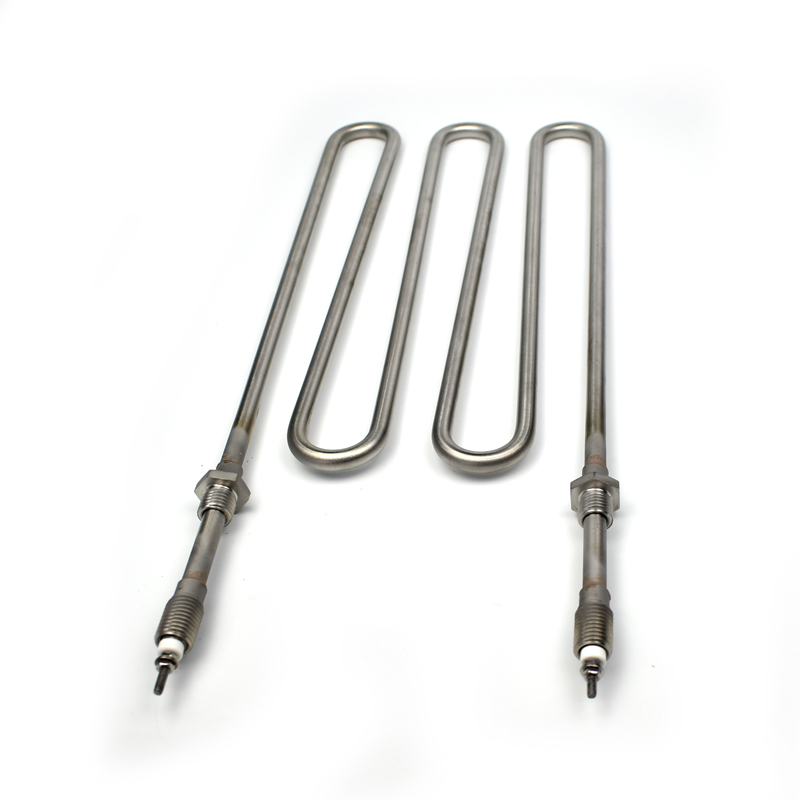Material selection of electric heating tube

The material selection of the electric heating tube is a relatively important factor among the factors that affect the quality of the electric heating tube. Therefore, how to choose its raw materials reasonably is the premise to ensure its quality.
1. Selection of resistance wire
The resistance wire materials commonly used in electric heating tubes are Fe-Cr-Al and Cr20Ni80 resistance wire. The iron-chromium wire selected by KAWAI is 0Cr25Al5, which has a higher melting point than ordinary iron-chromium wire and has a better service life. The main difference between the two resistance wires is that the melting point of 0Cr25Al5 is higher than that of Cr20Ni80, but at higher temperatures, 0Cr25Al5 is easier to oxidize, while Cr20Ni80 can maintain stable performance at high temperatures. Therefore, Cr20Ni80 is generally used for resistance wires used in high temperature conditions.
Second, the selection principles of pipes: corrosion resistance, temperature resistance.
For low-temperature tubes, aluminum tubes, BUNDY, and copper tubes are generally selected, while high-temperature tubes are different. Ingle tubes and stainless steel tubes are often used. Because the Ingle 840 electric heating tube can have very good oxidation resistance and corrosion resistance under high temperature working conditions.
3. Selection of sealing materials
The function of the sealing material is to ensure that the moisture in the atmosphere will not enter the magnesia powder through the nozzle, so that the magnesia powder will be damp, thereby reducing its insulation performance and causing it to fail due to leakage. The modified magnesium oxide powder can be unsealed.
The materials used for its sealing (moisture-proof) are mainly glass, epoxy resin, silicone oil, etc. Among them, the electric heating tube sealed with silicone oil, after heating, the silicone oil at the mouth of the tube will be heated and volatilized, and the insulation of the electric heating tube will decrease. The temperature resistance of epoxy resin materials is not high, so it cannot be used in high-temperature electric heating pipes such as barbecues and microwave ovens with high nozzle temperatures. Glass has higher temperature resistance, but higher price, and is mostly used for sealing high temperature tubes.
In addition, there will be silicone tubes, silicone sleeves, ceramic beads, plastic insulators and other components at the nozzle, mainly to increase the electrical clearance and creepage distance between the lead-out rod and the metal wall of the nozzle. Silicone rubber can play the role of filling and bonding.
Fourth, the selection of magnesium oxide powder
Magnesium oxide powder is located between the resistance wire and the pipe wall, and is used for insulation between the resistance wire and the pipe wall. At the same time, magnesium oxide powder has good thermal conductivity. However, magnesium oxide powder has strong hygroscopicity, so it should be treated with moisture-proof (magnesium oxide powder modification or electric heating tube sealing treatment) when using it.
Magnesium oxide powder can be divided into low temperature powder and high temperature powder according to the temperature range used. Low temperature powder can only be used below 400 ℃, generally it is magnesium oxide powder that has been modified.
Magnesium oxide powder is granular, and the magnesium oxide powder particles of different thicknesses are configured according to a certain proportion (mesh ratio) to form the magnesium oxide powder of the electric heating tube.








